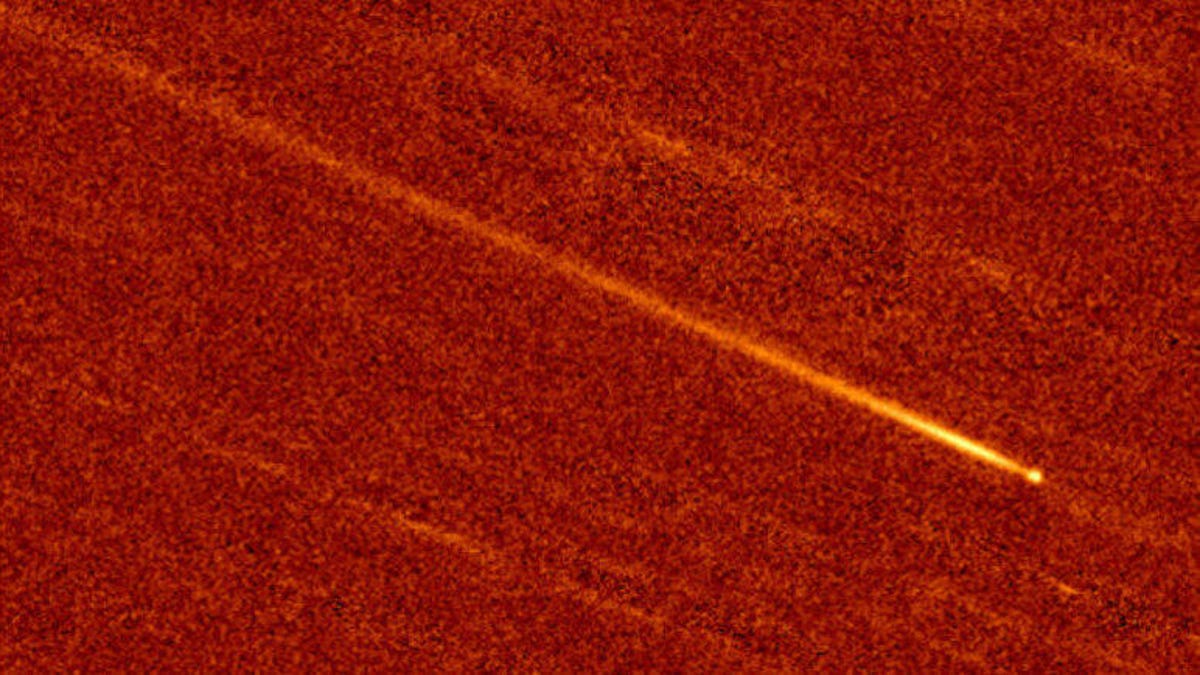NASA Caught a 'Sun-Diving' Comet Crashing Into Our Star
A dirty space snowball approached from one side of the sun but never came out the other side.

An image of a near-sun object like the sungrazing comet that crashed into the sun Sunday.
Gravity: hard to live with it and inconceivable to imagine the universe without it. A comet got caught at the hot end of that punchline over the weekend when the cosmic snowball was captured careening into the sun early Sunday by NASA's Solar and Heliospheric Observatory.
"The doomed comet was almost certainly a 'Kreutz sungrazer,' a fragment from a giant comet that broke apart many centuries ago," astronomer Tony Phillips wrote for Spaceweather.com. "A swarm of these fragments orbits the sun, and every day at least one gets too close and disintegrates. Most, measuring less than a few meters across, are too small to see, but occasionally a big one like today's attracts attention."
The below GIF is made up of a number of images from SOHO captured late Saturday and early Sunday. You can see the small comet unable to resist the intense gravitational pull of our star in the lower right quadrant. As the clock turns over to Sunday, it can be seen disappearing into the disc of the sun, which is blocked by SOHO's coronagraph to prevent damage to the instrument.
A comet can be seen crashing into the sun's lower right limb in this animation take from NASA's solar observatory.
Since nothing comes out the other side of the sun, it's fair to assume this sungrazer was fully vaporized by the intense heat.
The animation also provides an interesting snapshot of just how tumultuous the sun is right now as it approaches a peak in sunspot activity sometime between now and 2025: an apparent coronal mass ejection can be seen erupting from the other side of the sun as the comet is racing to its demise.
THE COMET DID NOT SURVIVE: As with most sun-diving comets, this one did not come out the other side of the Sun after its nearest approach to the Sun (perihelion). :( pic.twitter.com/ok5fHbfdDv
— Keith Strong (@drkstrong) August 7, 2022
Most comets are thought to originate from the outer edges of our solar system in a cold, dark region known as the Oort cloud. Many are on very long orbital paths that bring them through the inner solar system and nearer to us only once every few decades, centuries or even longer.
But this particular unnamed comet has made its final visit to our neighborhood. Rest in (obliterated) pieces, buddy.

